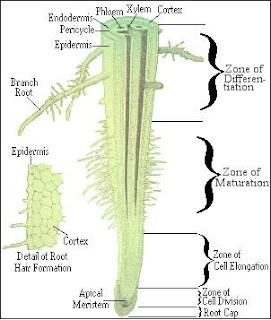Macan tutul Sunda yang tertangkap kamera otomatis yang dipasang lembaga Konservasi Karnivora di Hutan Lindung Tangkulap, Sabah, Malaysia.
KOMPAS.com - Kucing besar yang sering disebut macan dahan (Clouded leopard) ternyata memiliki dua sub-spesies. Para peneliti baru menyadari adanya spesies yang berbeda dari macan dahan yang hidup di Asia, tahun 2007 lalu.
Kini, analisis genetika sudah meyakinkan bahwa kucing itu punya dua ciri berbeda, antara yang hidup di Sumatera dan yang habitatnya di Kalimantan.
Macan dahan tergolong kucing besar yang sukar dipahami, termasuk singa, harimau, jaguar, macan salju dan macan pada umumnya. Mereka hidup menyebar di Asia Tenggara, hingga China dan India, dan memiliki pola bulu seperti awan yang lebih lebar dibanding macan tutul.
Hingga 2006, semua macan dahan disangka tergolong dalam satu spesies saja. Namun, studi genetika menyingkapkan bahwa sebetulnya ada dua spesies macan tutul yang berbeda.
Lazimnya diketahui, macan dahan hidup di Asia daratan dan digolongkan dalam spesies Neofelis nebulosa. Namun kini para ilmuan memastikan, ada spesies macan dahan lain yang hidup di Pulau Kalimantan dan Sumatera.
Macan itu terkenal sebagai macan dahan Sunda (Neofelis diardi), meski sebelumnya dan secara keliru disebut sebagai macan dahan Borneo. Kedua spesies itu diduga terpisah lebih dari satu juta tahun silam.
Sejak 2008, spesies baru itu pun terdaftar di International Union for the Conservation of Nature.
Pada 2010, sebuah tim ilmuan yang bekerja di Dermakot Forest Reserve, Malaysia mengumumkan jejak kaki pertama kucing besar itu dari alam liar. Dipimpin Mr Andreas Wilting dari Leibniz Institute for Zoo and Wildlife Research di Berlin, Jerman, para peneliti mendapatkan foto macan dahan Sunda sedang berjalan di jalanan.
Kini, Mr Wilting dan koleganya menerbitkan penelitian baru yang menyingkap lebih jauh tentang kucing misterius itu.
Mereka mengambil sampel dari 15 macan dahan Sunda yang hidup di Borneo, dan 16 ekor yang hidup di Sumatera, untuk melakukan studi molekular dan genetika demi menyingkap asal-usulnya.
Para peneliti juga meneliti tengkorak 28 macan dahan Sunda dan bulu dari 20 spesimen yang tersimpan di museum, termasuk bulu kucing yang difoto dari Sumatera dan Kalimantan.
"Meskipun kami curiga bahwa macan tutul Sunda di Borneo dan Sumatera terpisah secara geografis sejak Zaman Es terakhir, namun belum diketahui apakah keterpisahan yang lama itu menyebabkan mereka terbagi menjadi sub-spesies yang berbeda," kata Wilting.
Namun, analisis timnya menyatakan, kucing besar itu terbagi menjadi dua, sub-spesies Borneo yang disebut Neofelis diardi borneensis dan sub-spesies Sumatera yang disebut Neofelis diardi diardi.
Hasil analisis itu diterbitkan di jurnal Molecular Phylogenetics and Evolution. Macan dahan dari dua pulau itu berbeda secara morfologis, memiliki bentuk unik di tengkorak dan gigi. Belum jelas penyebab macan dahan Sunda berevolusi dalam dua sub spesies itu.
"Sejauh ini, kami hanya dapat berspekulasi tentang peristiwa tertentu dalam evolusi macan tututl itu," kata anggota tim penelitian, Joerns Fickel, juga dari Leibniz Institute for Zoo and Wildlife Research.
Namun para peniliti menduga, erupsi vulkanik di Sumatera sekitar 75.000 tahun silam yang mempengaruhi perbedaan keduanya kini. Satu kelompok hidup di China dan seluruh benua Asia, kelompok lainnya di Kalimantan, menjadi macan dahan Sunda.
Apparently There are 2 species of Clouded Tiger Sunda
Leopards caught Sunda automatic camera mounted at the Carnivore Conservation agencies Tangkulap Protected Forest, Sabah, Malaysia.
KOMPAS.com - big cats are often called the clouded leopard (Clouded Leopard) actually has two sub-species. The researchers realized the existence of different species of clouded leopard that lives in Asia, in 2007.
Now, genetic analysis has been assured that the cat had two distinct characteristics, among which live in the habitat in Sumatra and Kalimantan.
Clouded leopard belonging elusive big cats, including lions, tigers, jaguars, snow leopards and tigers in general. They live to spread in Southeast Asia, to China and India, and has feathers like a cloud pattern that is wider than the leopard.
Until 2006, all suspected of belonging clouded leopard in a single species. However, genetic studies revealed that actually there are two different species of leopards.
Typically known, clouded leopards living in mainland Asia and classified in the species Neofelis nebulosa. But now scientists are sure, there are other species of clouded leopard which lives on the island of Borneo and Sumatra.
Typically known, clouded leopards living in mainland Asia and classified in the species Neofelis nebulosa. But now scientists are sure, there are other species of clouded leopard which lives on the island of Borneo and Sumatra.
Tiger is known as the Sunda clouded leopard (Neofelis diardi), although previously and erroneously referred to as the clouded leopard of Borneo. Both species were thought to separate more than one million years ago.
Since 2008, a new species that was listed in the International Union for the Conservation of Nature.
In 2010, a team of scientists working in Dermakot Forest Reserve, Malaysia announced the first footprints of the big cats of the wild. Led by Mr Andreas Wilting of the Leibniz Institute for Zoo and Wildlife Research in Berlin, Germany, researchers get a photo of the Sunda clouded leopard was walking on the street.
Now, Mr. Wilting and colleagues published a new study that reveals more about the mysterious cat.
They took samples from 15 clouded leopard that lives in Borneo Sundanese, and 16 goats which live in Sumatra, to perform molecular and genetic studies to reveal its origin.
The researchers also examined the skulls of 28 clouded leopards Sunda and feathers from 20 specimens stored in museums, including cat fur is photographed from Sumatra and Kalimantan.
"Although we suspect that the Sunda leopard on Borneo and Sumatra are geographically separated since the last Ice Age, but not yet known whether the long separation that causes them to split into different sub-species," said Wilting.
However, analysis of his team said the big cat were divided into two sub-species of Borneo, called Neofelis diardi borneensis and Sumatran sub-species called Neofelis diardi diardi.
The analysis result was published in the journal Molecular Phylogenetics and Evolution. Clouded leopard of two morphologically distinct island, has a unique shape in the skull and teeth. Not yet clear cause clouded leopard Sunda evolved into two sub-species.
"So far, we can only speculate about the specific event in the evolution of tiger tututl it," said research team member, Joerns Fickel, also from the Leibniz Institute for Zoo and Wildlife Research.
"So far, we can only speculate about the specific event in the evolution of tiger tututl it," said research team member, Joerns Fickel, also from the Leibniz Institute for Zoo and Wildlife Research.
But the researchers suspect, volcanic eruption in Sumatra around 75,000 years ago that affects both the difference now. One group lived in China and throughout Asia, other groups in Kalimantan, became clouded leopard Sunda.




Comments
Post a Comment
Isi Komentar kamu untuk Posting ini!!